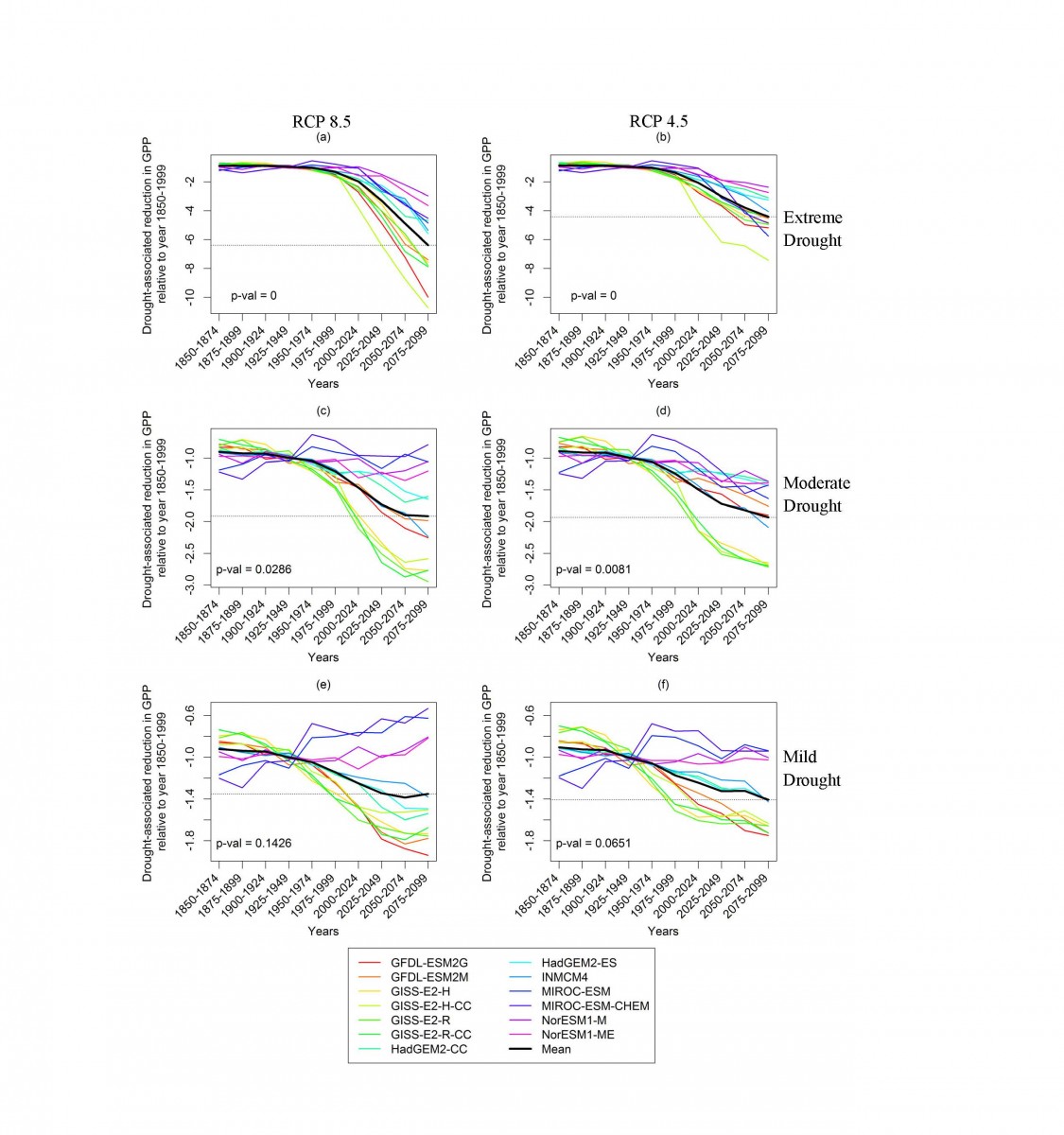Drought impact on vegetation growth and mortality
Vegetation is a key regulator of the global carbon cycle via CO2 absorption through photosynthesis and subsequent growth; however, low water availability, heat stress, and disturbances associated with droughts could substantially reduce vegetation growth and increase vegetation mortality. As far as we know, there are few studies have assessed the drought impact on vegetation growth and mortality at regional and global scales. In this study, we analyzed 13 Earth System models (ESMs) to quantify the impact of drought on GPP and linked the remote-sensing based tree mortality to observed drought indices to assess the drought impact on tree mortality in continental US (CONUS). Our analysis of 13 Earth System models (ESMs) shows that the average global gross primary production (GPP) reduction per year associated with extreme droughts over years 2075-2099 is predicted to be ~3-5 times larger than that over years 1850-1999. The annual drought-associated reduction in GPP over years 2075-2099 could be ~52 and 74 % of annual fossil fuel carbon emission during years 2000-2007. Increasing drought impacts on GPP are driven primarily by the increasing drought frequency. The risks of drought-associated GPP reduction are particularly high for temperate and tropical regions. The consistent prediction of higher drought-associated reduction in NPP across 13 ESMs suggests increasing impacts of drought on the global carbon cycle with atmospheric warming. Our analysis of drought impact on tree mortality showed that drought-associated carbon loss accounts for ~12% of forest carbon loss in CONUS for 2000-2014, which is about one-fifth of that resulting from timber harvesting and 1.35 % of average annual fossil fuel emissions in the U.S. for the same period. The carbon stock loss from natural disturbances for 2000-2014 is approximately 75% of the total carbon loss from anthropogenic disturbance (timber harvesting), suggesting that natural disturbances play a very important role on forest carbon loss from dead trees. Our results clearly demonstrate the importance of drought impact on forest carbon stocks at the continental level and will provide critical data for future model improvement to better predict the vegetation mortality under droughts.

